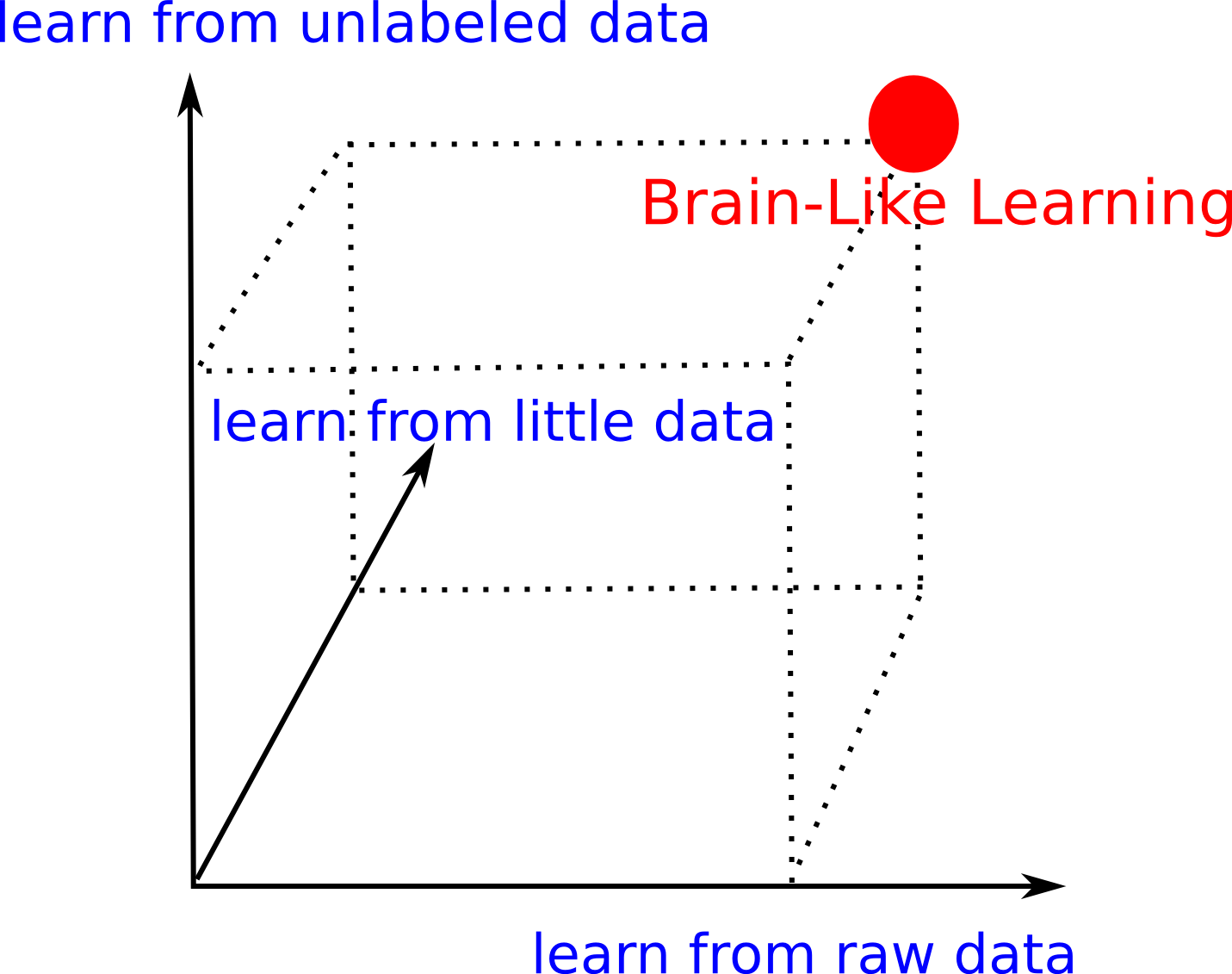Three Aspects of Brain-Like Learning
Artificial intelligence (AI) has become a hot topic (again), due to the recent success (and hype) of deep learning.
The technological breakthrough of deep learning is real and has made many things from impossible to possible. The excitement has made some people believe we will soon achieve human brain-level intelligence, or so called “singularity”.
We need to be cautious on what we have achieved. In this figure below, I list three aspects of brain-level learning capability:
- learning from labeled raw data,
- learning from unlabeled data, and
- learning from little data.
These three aspects are illustrated as the three dimensions of a cube, where the brain-like intelligence lies at the far-right corner. We need all of these three capabilities to achieve human brain-level AI.

What we have achieved with deep learning is only the first dimension: learning from labeled raw data. Given large amount of input-output pair training data, it automatically learns hierarchical features and build an input-to-output mapping. This kind of learning is also called imitation learning. It has severe limitations: It never learns anything new other than imitating what’s provided; It has poor adaptivity with the changing environment; And it requires large amount of expert provided training data. This is an expensive solution in many applications, such as health care. This is also a fragile solution in many fully autonomous applications, such as self-driving cars and robotics, where the AI agent needs to adapt to constantly changing environment. And this does not provide a solution for applications where we need to discover new patterns in data.
What we need next is breakthroughs in unsupervised learning and semi-supervised learning, which will create machines that can learn autonomously from the unlabeled raw data with little or no supervision. This is the next frontier of AI research.
In summary, we need to make progress in the following three paradigms at the same time to achieve the three capabilities of brain-like learning:
- deep (supervised) learning,
- unsupervised learning,
- semi-supervised learning.